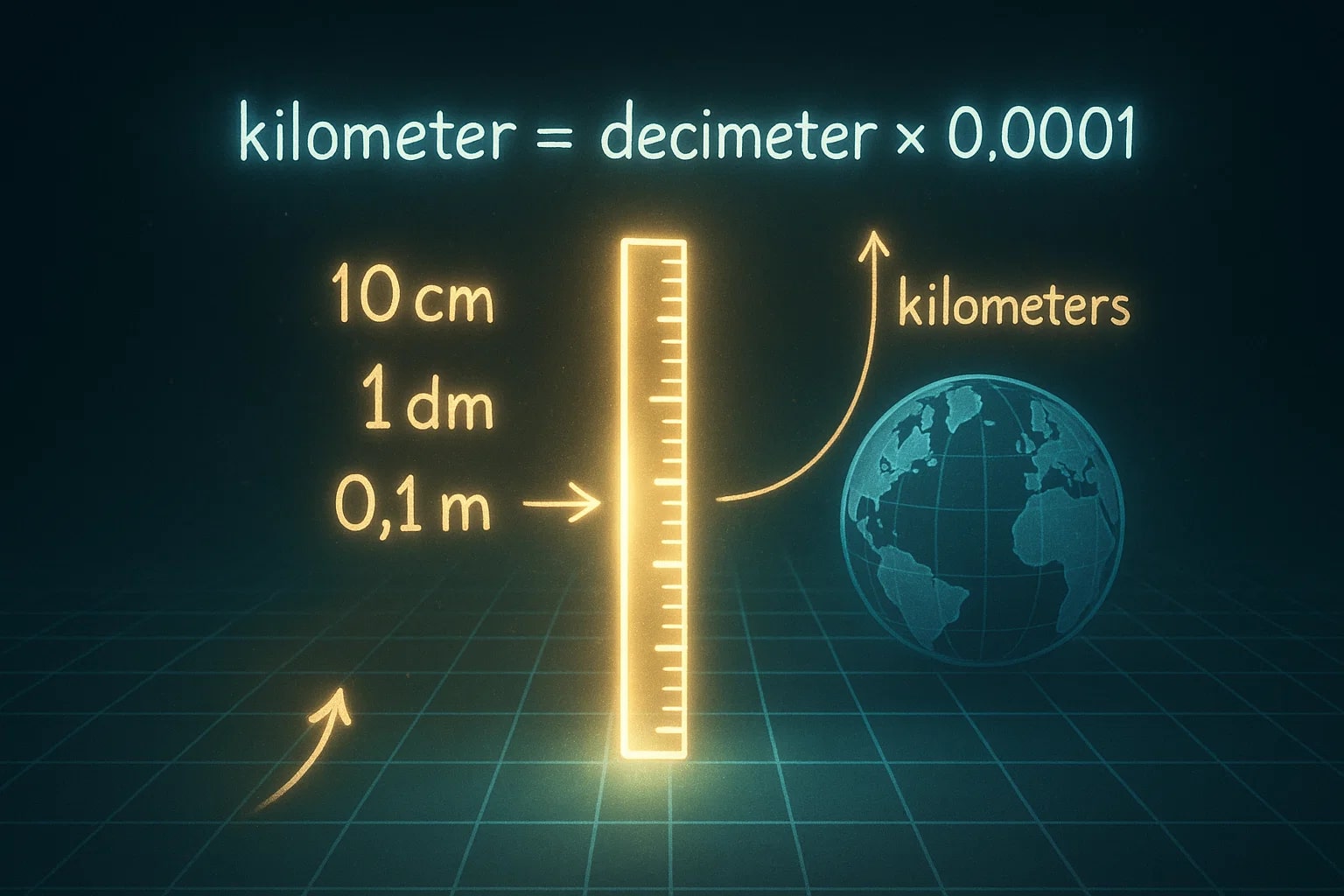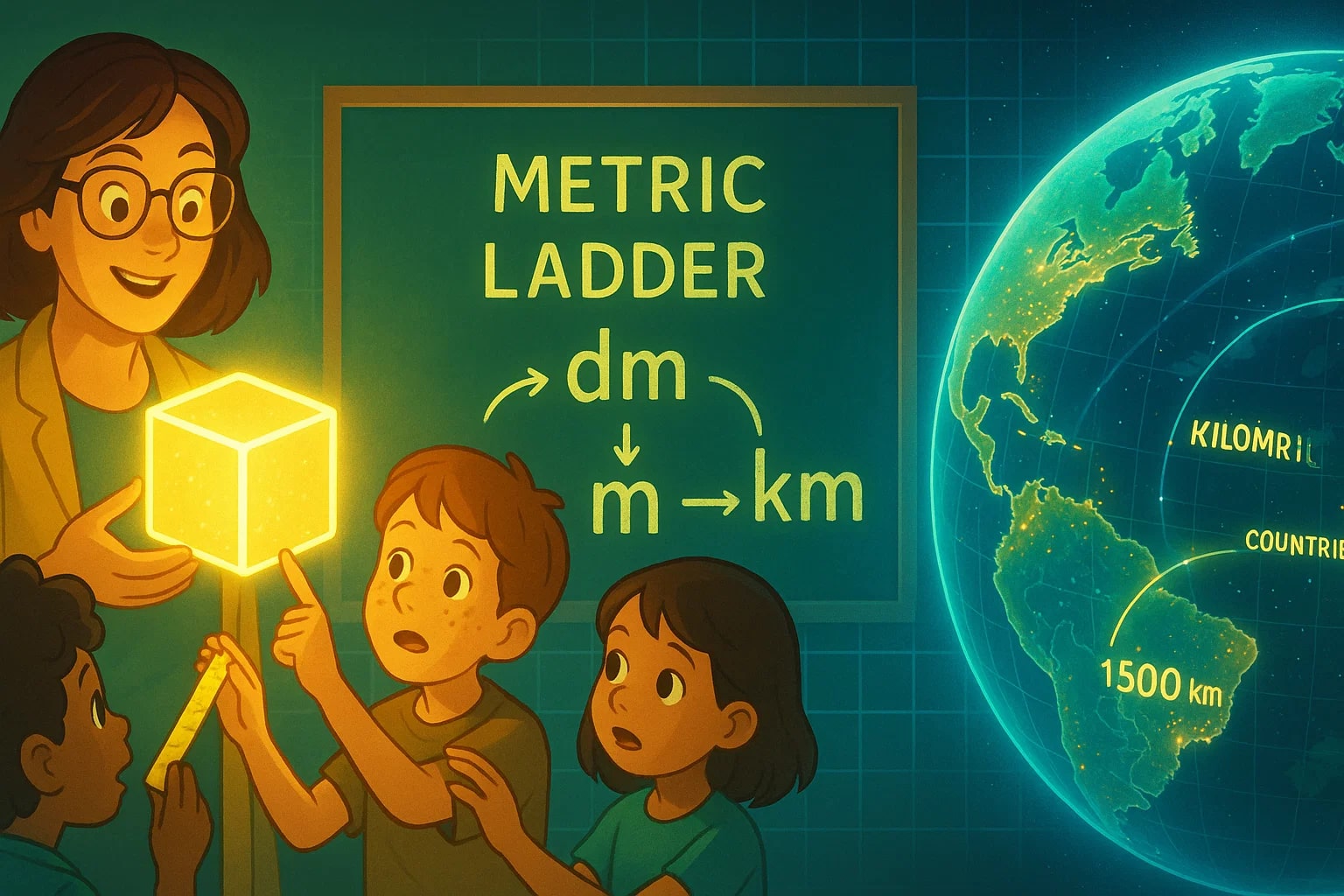decimeter to kilometer – How to convert dm to km
Switching from decimeter to kilometer may sound unusual, but it demonstrates the power of the metric system’s decimal structure. The decimeter is used mainly in education and specific scientific contexts, while the kilometer is a practical unit for large distances such as roads and geography. Learning how to convert dm to km shows how effortlessly the metric system scales from small to very large.

What is a Decimeter (dm)?
A decimeter is one tenth of a meter:
1 dm = 0.1 m.
It is equal to 10 centimeters and is often used in classrooms and in certain scientific calculations to represent mid-range lengths.
What is a Kilometer (km)?
A kilometer equals one thousand meters:
1 km = 1000 m.
It is widely used in everyday life to describe road distances, running tracks, and geographic scales.
How to Convert dm to km
The formula is:
kilometer = decimeter × 0.0001
For example, let’s convert 25 000 dm into kilometers:
kilometer = 25 000 × 0.0001 = 2.5 km
So, 25 000 dm = 2.5 km.
For more related calculations, try the Length Converter or check out the full Conversion Tools.
Do you know?
-
The decimeter was introduced with the original French metric system in the 18th century, mainly for educational use.
-
Kilometers became the preferred unit for roads and maps in nearly every country except those using imperial units.
-
Marathons are officially measured in kilometers—42.195 km—equivalent to 421,950 decimeters.
-
In physics, decimeters are sometimes used in fluid dynamics, while kilometers dominate geology and astronomy when discussing scale.
From Classroom Units to World Maps
Decimeters rarely appear outside textbooks, but they play a role in helping students understand the step-by-step logic of the metric ladder. Teachers use them to show how simple multiplications and divisions move smoothly up or down between centimeters, meters, and kilometers.
Kilometers, on the other hand, dominate daily life for travelers and cartographers. When converting between decimeters and kilometers, you can appreciate the flexibility of the system: one unit introduces students to base-10 calculations, while the other connects to real-world distances across cities and countries.

From Small Steps to Great Distances
The conversion from decimeter to kilometer highlights how the metric system scales seamlessly from the classroom to the open road. Even if the decimeter is less common in daily practice, it plays a valuable role in building mathematical understanding, while the kilometer represents practicality in navigation and mapping.
By applying one quick formula, you can bridge these two extremes—linking the small with the vast.

